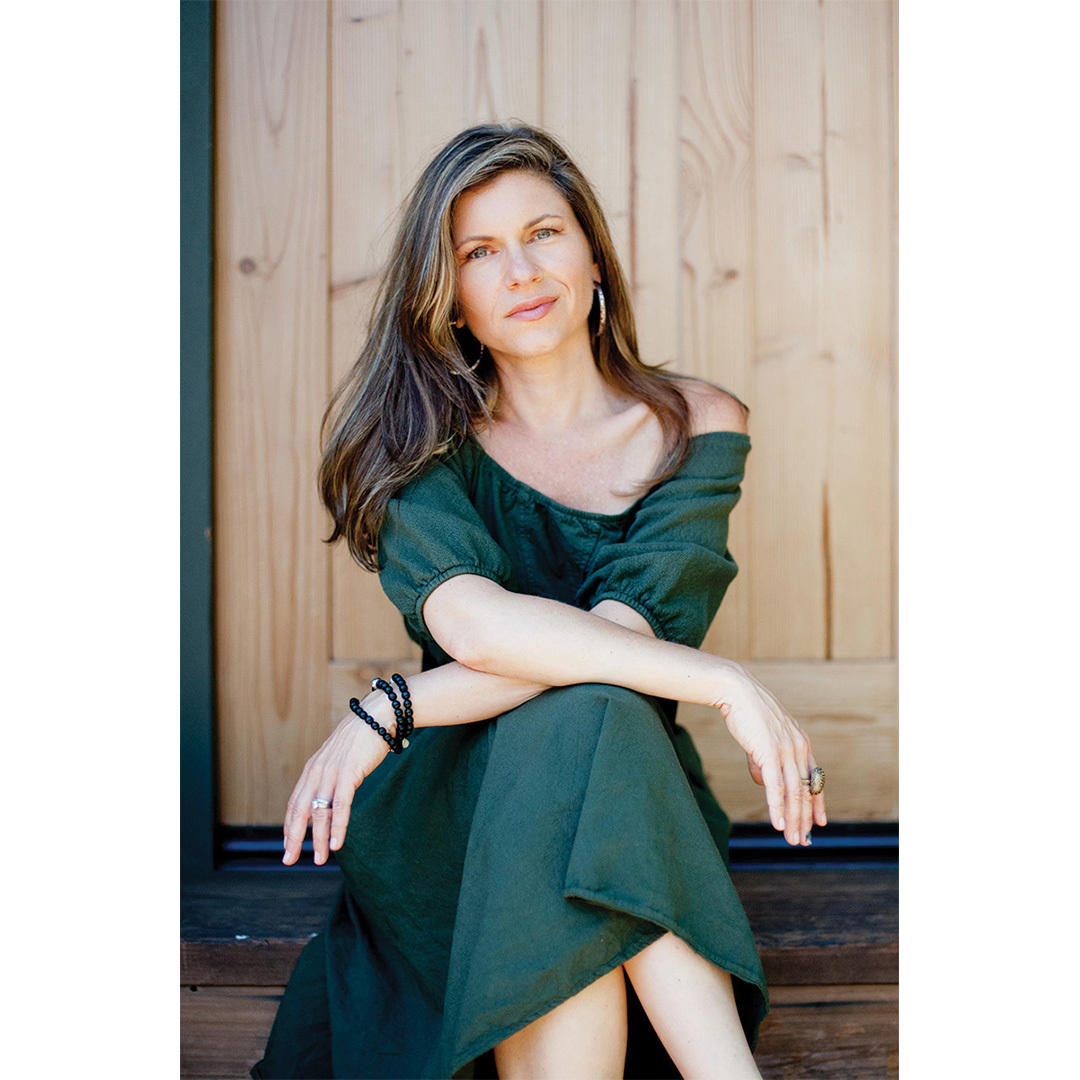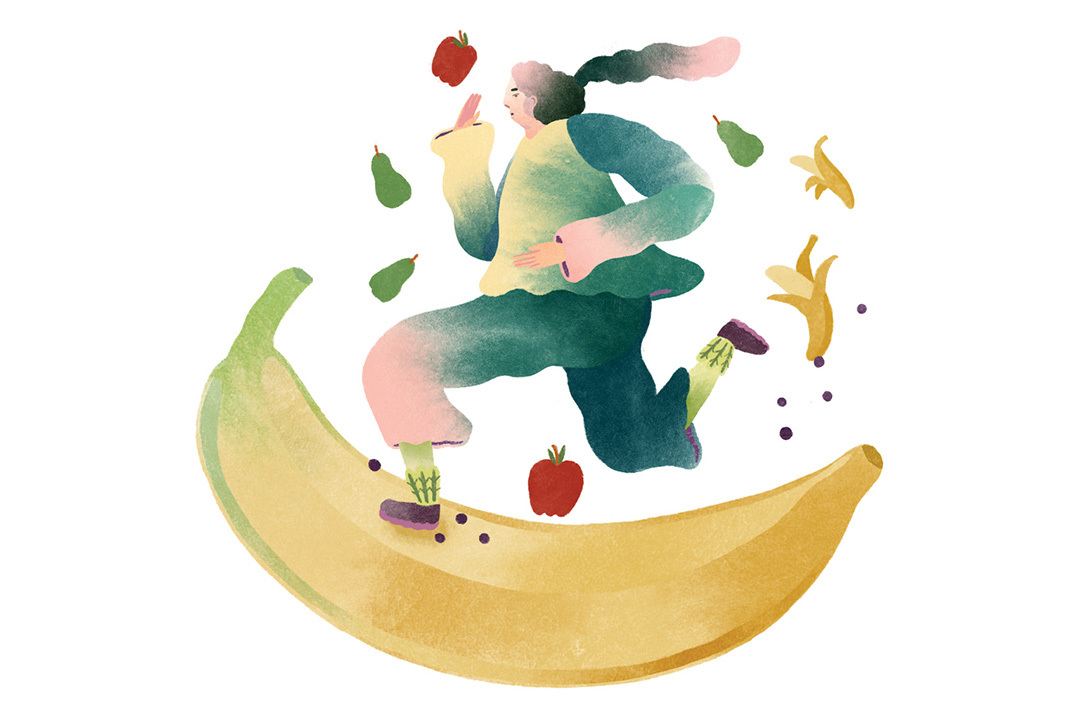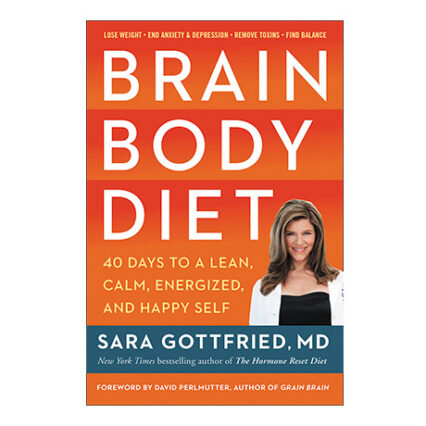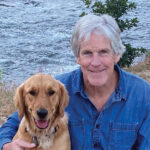40 Days to a Lean, Calm, Energized & Happy Self
An interview with Sara Gottfried MD
Art By Jesse Zhang
Sara Gottfried MD leaped into public consciousness with best-sellers, including The Hormone Cure and Younger. Since then, the MIT/Harvard-trained physician had a fall (literally)—and started looking at the ways we sabotage our own health and happiness. She’s developed protocols to make everything better . . . before it’s too late.
In your latest book, Brain Body Diet, you talk about a dark night of the soul that changed your mind about health. What happened?
I hit my head. I hit it so hard that I had convulsions. I also feel I could say to you that a spirit door opened. I don’t write about this in the book, but I had a vision about where I was in my life, and it was really clear to me that I was veering off from center. I was incredibly ambitious, very driven, with workaholic tendencies, and a lot of addictive patterns. The reason I fell and hit my head is that I had low blood sugar and was dehydrated. But the underlying problem was that I lived in a constant state of hyperarousal. I wasn’t taking care of my body. In that moment, lying on the floor, I just had this epiphany about how hard-driving I was, and how I was more like a bulldozer than a woman. I didn’t have a lot of choice in the matter because I had to lie in a dark room for months, but slowly, I realized the cost of the way that I was living.
"I just had this epiphany about how hard-driving I was, and how I was more like a bulldozer than a woman."

Photo by Madeleine Tilin
When you were lying there in the dark, what were you planning?
Well, I wasn’t planning anything. I had spent the last 30 years planning every detail of my life, and I couldn’t go to that left side of my brain, the planning side. I’ll give you an example. I have two daughters, and I’ve raised them to speak up, speak their truth—and I did problem solving when they brought problems to me. But I couldn’t do that for months. What I could do was lie in bed with them, snuggle with them, and listen. My older daughter in particular, who is now 19, said to me, “Mom, you are the least stressed I’ve ever seen you.” Sometimes, it takes that reflection of your children noticing that something dramatic has changed. They talked about how much more fun it was to be with me because I wasn’t so task-oriented.
You had to fall down and practically kill yourself to change your life. But how do we do it without the near-death experience? And why 40 days?
I love 40 days because it’s the container that I use from yoga for any sort of transformation that I want in my life. I have been practicing yoga since I was a small child, and I’ve gone through various ways of practicing meditation over the past few decades, and I practice a lot of Kundalini yoga right now. It’s what I was able to practice after my concussion, and it seemed to help me with integration much more so than the Vinyasa (power) yoga that I practiced before that. Kundalini really suited me—and I love that all body shapes and sizes can do it. The 40 days is typical: You choose your exercises and choose your goals—and have this 40-day container.
OK. So, without falling down and hitting our heads, what’s our goal for those 40 days?
It’s getting people to look at the ways that their brain-body is out of balance. I like this term, brain-body. We talk a lot about body-mind-spirit, and I think people’s eyes glaze over, and so I want a fresh way of talking about this. The way that I think about brain-body is really about starting with the gut because I think the gut is such a central part of not just your health throughout your body, but also what I would call neuro-spirituality.

I’ve seen 25,000 patients over the past few decades, and the key issues for them are weight loss, energy, low sex drive, and mood issues.
So, I start with food because it improves all those things.
So, on the first day of spring, for example, our readers are going to start their 40 days with . . . What?
Start with food. I think that’s the most important driver for a lot of the people I work with. I’ve seen 25,000 patients over the past few decades, and the key issues for them are weight loss, energy, low sex drive, and mood issues. So, I start with food because it improves all those things. What I talk about in the book is basically an elimination diet. What I find with elimination diets is that they improve somewhere around 70 to 80 percent of symptoms. If someone’s coming to this work and they have a vulnerability toward anxiety or they have a vulnerability toward addictive behaviors, or a vulnerability toward depression, all those things can be addressed with an elimination diet. It’s mostly cutting out sugar, and grains, especially gluten, things that are inflammatory. We’re trying to reduce the level of inflammation in the body.
The second piece is the way that you move. I would say it’s the way that you eat, move, feel, think, and sleep. I think that’s how you start the revolution. I think you start it internally, and it’s also about connecting to something deeper. Some people call it God. My husband calls it fly-fishing. Whatever you call it, I think there are these positive qualities that start to mend the disruptions in the brain-body and restore you to a lean, calm, energized, and happy self.
Spring Cleaning Your Social Genomics
While you’re cleaning the toxins from your house, I think it’s also really important to check for toxins in your social genomics. That’s the science of how our social interaction—you and I talking—changes the expression of our DNA. It can have especially positive effects when we’re having a positive interaction, but there can also be negative effects, which are incredibly common.
Three triggers put the body on high alert: social isolation, social rejection, and social conflict—so many of us face these kinds of triggers all day long. Our DNA evolved to interpret these messages as a sign that you’re going to be injured physically, and so your DNA prepares for it. Even in the absence of physical injury, if you’ve got the rejection, the isolation, or the conflict, your DNA prepares for injury and sets off inflammation. It tells your immune system, “Get ready, get ready, get ready. She’s going to get cut!” That can set off autoimmune problems. It can set off breast cancer. It can set off prostate cancer.
What I tried to do in my home is to create a socially genomic environment that embraces health. We don’t have conflict at the dinner table. If my husband and I need to discuss something that we know is kind of hot, we don’t discuss it at 10 o’clock at night before we go to bed. We’ve gotten really good at putting it in a “parking lot.” We take the dog for a walk. When you’re exercising your big muscles, that’s the best time to talk about something conflictual.
It’s amazing to me how much of this is under our control. It took me 15 years of marriage to realize that, in the middle of a kind of hot conversation, I could say, “Maybe you’re right.” Those three simple words change everything: They get me to create an environment that is more socially genomically happy and healthy, and less likely to cause inflammation.
I think everybody’s got something that throws them off. For me, I drink too much wine, and I realize if I keep doing it, I’m going to rot my brain, and no amount of exercise is going to save me. But what is the catalyst that allows me to actually make the change that I need to make? I think that’s what we’re all asking. One nice thing about a 40-day period is that that’s short enough to commit to. And also long enough to actually make a real change and to feel different at the end of it.
Yes. I’m a big fan of starting with why, and to define your “Why?” as you come to this. My last book was much more about the fear of dying prematurely—dying in a way that could be preventable and trying to increase health span. I think that’s less of the issue here. I think this has much more to do with the ways that you’re polluting your body and destroying the brain-body connection—things that you have total control over. I speak directly to people who might be drinking a little too much and not acknowledging that alcohol is a neurotoxin and shrinks the brain, and destroys your sleep, and on and on.
Alcohol is a huge one. So is food that’s got glyphosate in it. So is sugar, which also shrinks the brain and tends to get you jacked up. The elimination diet is about cutting out these toxins that disrupt that brain-body connection.
But if I could back up a little bit, I think the deeper “why” that I’m trying to get at is that so many of us exist in a state of hyperarousal—my state before I hit my head. I didn’t even know that it was happening until I was flat on my back, and just started to look at this pattern that I had had for so many years. It served me pretty well, but it was definitely an accelerating stress response, giving me anxiety. I had a tendency toward depression. I had these addictive behaviors, including with alcohol, preferably fine wine, and I also had addictive patterns with exercise. I would exercise even with an injury. Addiction is anything that you do repetitively despite evidence of adverse effects. We do that with exercise, too.
I think part of a personal revolution is waking up to how we self-medicate our hyperarousal. Hyperarousal leads down this path of having high cortisol levels—because stress is pretty high. That makes us choose not the most resourceful things for food, and so we’re more likely to eat refined carbohydrates, and too much sugar, and not enough vegetables. It makes us choose to pour another glass of wine instead of stopping at one. It gets us to have an argument with our spouse when we could have stayed in a more proactive place. I can’t tell you that there’s only one behavior where people recognize themselves, because I think this hyperarousal shows up in different ways.
If they’re having trouble sleeping, then
we’ll address the root cause,
so that we’re not just masking symptoms.

Discover the Secrets of Your Sleep & Rest
This little ring is called an Oura. [Dr. Gottfried holds up her right hand, bearing a ring]. I don’t know if you can see the sensors inside there, but one of the things that it does is it measures my heart rate variability, the time between every two of my heartbeats. My heartbeat is a little less than 60 at rest. But that’s not one beat every second, it’s one beat every 1.05 seconds, 0.85 seconds. The amount of variability, beat to beat, is a measure of health, it’s a measure of the balance between your sympathetic nervous system and your parasympathetic nervous system—the fight-flight-freeze response (the sympathetic) and the rest-digest-calm-down-and-heal system. I want a really good balance between the two, so I look at my heart rate variability every morning and use that to determine how much recovery I’ve had—and how aggressive I can be with my exercise.
The Oura also provides an algorithm to look at how your heart rate falls while you’re sleeping—which is a measure of how well you’re sleeping. If my resting heart rate doesn’t drop as fast as it should, I ask myself, What do I do in the gym to make that happen? Or what do I do before I go to bed? The tracker allows you to do what’s called an N of 1 experiment, which I think is actually the future of research in this area. We’re all so different. Randomized trials are too expensive and just don’t work for lifestyle medicine. You have to experiment on yourself—and the tracker will help you do that.
So, we’re going to start our 40-day spring cleaning for hyperarousal. I’m going to get the toxins out of my diet—and spring is the best time of the year to do it. But you also talk about toxins in the house. What’s the most important thing you can do?
Well, definitely houseplants. I think those are essential. We know that houseplants are associated with better health, better oxygenation. We also know that about half of buildings, including houses, are water damaged and have mold. So, look for mold visually, maybe even getting a test to look for mold. One in four people have the genetics that make them exquisitely sensitive to mold. I actually had mold in my house that I couldn’t see.
Another thing is air filters. We had horrible forest fires here in California, and the air quality here was worse than in Beijing for about a month. It’s rare that the air quality inside your house is better than the air quality outside, but air filters can help change that. And blackout shades. We had a film crew here today filming us because we got all these room-darkening shades, which dramatically changed my sleep. Meanwhile, my husband and I were cleaning the windows with white distilled vinegar mixed with water. Never done that before—and it worked great.
How do we start the day?
I like to architect the day very deliberately, almost like the way that I architect a yoga class, meaning that I have to start my day not with checking my emails, not with drinking a cup of coffee. Instead, I make some green tea, and I sit down, and I meditate or I practice yoga. That allows me to set up my nervous system for the best possible day, for the most resourcefulness throughout the day. If I miss it, I totally notice. I’m shorter-tempered, I’m more reactive. It just doesn’t work as well.
The next is exercise. It took me a long time to realize this: I have to exercise, and sometimes I need to do 90 minutes with high-intensity interval training, if my body is up to it, and I measure that. I don’t know if you measure heart rate variability, but that’s something I’m a big fan of every morning. [See “Discover the Secrets of Your Sleep & Rest” on page 62.]
I never have any business meetings until after 10:00 a.m. And I plan my peak crescendo yoga pose for the day. Today, it’s meeting with you. It’s a little later in the day, but you’re my peak experience today. I kind of build up to it and make sure that I’m preparing my energy for it and I’m eating in a way that supports it: I started my day with a green shake so that I can get all the phytonutrients that I think are important. Then, I make green shake decisions all day long.
What’s a green shake decision?
I’ve gone through different phases with eating in different ways. Most recently, I tried keto, where I would have eggs and bacon and cheese for breakfast. My body did not do well on keto. I don’t make good decisions when I don’t get enough vegetables. Vegetables help my DNA be expressed in the best possible way so that I’m making smart decisions aligned with my true self, aligned with my message, and aligned with what I’m meant to be doing. I choose a salad at lunch with salmon on top. By eating for my own body, I make better decisions with my husband, I make better decisions with my daughters, I make better business decisions about how many flights I’m willing to do per day. Those are my green shake decisions.
Before we met, my brain was fogged in. So, my preparation for talking to you was doing one-minute intervals on my rowing machine at an intensity of about a 9.5. That’s how I clear my brain of fog.
I totally agree with that. I would say my best ideas come either during a hard workout or immediately afterward. I think it has to do with what exercise, hard exercise, does to the configuration/architecture of your brain in terms of recruiting new nerve cells and then connecting them better—creating more density between the nerve cells, more connections. That’s what is associated with the greatest creativity for me personally, and it’s also been documented in research.
What about supplements?
I am a fan of supplements—but I don’t think that you can out-supplement a lousy diet or too much wine or not enough exercise. With supplements, what I recommend in terms of people starting is to figure out, OK, what’s your pain point? This gets back to your “Why?” Are you anxious? Do you have brain fog? Do you have addictive patterns like with alcohol? I would start with the “Why?” and then build a supplement plan around that.
A “why” for my 40-day revolution is clearing brain fog. I think that might be high on the list for a lot of people. Where do we start?
I think it should be high on the list. Brain fog definitely maps to inflammation in the brain—neuro-inflammation. There’s almost nothing in the literature about brain fog even though we know that it’s an early precursor of some of these other neurodegenerative problems like Alzheimer’s disease and dementia. Brain fog is a sign 10 years before the scarier diagnosis, and so we want to address it as early as possible. There’s a lot that you can do, a lot of things that are proven to help. Not just exercise but food and sleep. And it’s a way of talking about supplements. I spent about 40 pages on brain fog in my book.
I don’t give people 23 things to do.
I typically start with just three: food, sleep, and movement.

So, a patient comes in and says, “I have brain fog.” What do you do?
Well, I start with a history, looking for certain patterns. Some people develop brain fog after they’re stressed. They have a stressful workday and then get brain fog for the rest of the night. Other people have it all day long, or get it after they take a sleeping pill. So, I take a history to get a sense of what may trigger it. Are there certain foods that make it worse? We sleuth the timing of the brain fog to look upstream at what could be causing it. I’m also going to ask about toxins, and I’m going to ask about movement because not all people hop on their ergometer when they’re feeling a little foggy. People who sit too much—which is, like, 70 percent of Americans—are more likely to have brain fog. So, I’ll ask about movement.
I’ll also ask about the gut because if you have a leaky gut, you’re more likely to have a problem with your blood-brain barrier, and that leads to the signal that tells your brain to get inflamed. I’ll ask about what they’re eating. Are they eating the sugar and the gluten? Are they consuming alcohol? Are they doing the things that disrupt the integrity of the gut—that could be disrupting the integrity of the brain?
I’m also going to ask about blood flow to the brain: Do you have a family history of hypertension? I’m going to ask about medications. For example, a lot of people take Benadryl at night to try to help them sleep; Benadryl has been associated with brain fog and dementia. If they’re having trouble sleeping, then we’ll address the root cause, so that we’re not just masking symptoms. I’m going to ask about stress response and what stress-resilient practices they have.
I’ve got a lot of breast cancer survivors who’ve had brain fog since they went through chemo—there are very specific supplements that are shown to help with that. Another thing I mentioned is my Oura Ring. Often, I’ll prescribe one for my patients, if they can afford it, because what I often find with patients with brain fog is that they’re not allowing enough time for recovery or not getting enough deep sleep.
That’s where I start, and then I do a physical exam and order laboratory tests, and then we architect a protocol together of what they can do.
What about blood sugar?
Whoa! Blood sugar! OK. So, blood sugar is my favorite topic of all . . . [See “Awaken to the Elephant in Your Bloodstream,” below.]
That’s a lot to think about.
Yes. But I don’t give people 23 things to do. I typically start with just three: food, sleep, and movement. I’m also going to ask them about their why. Like, why do you care about brain fog? Why do you need to be sharp? Not everybody needs to be sharp, so I look for real specificity: Why does it matter that you have clarity of thought?
It now takes so much intelligence and technology to make up for not living the way we’re supposed to live.
That is for sure. And I would even maybe reverse it a little bit. I would say that there’s this innate intelligence to our bodies that is so powerful, and I feel that we have developed all these ways to create obstacles to that innate intelligence. And, often, the work is to figure out what obstacles to remove so that you can get back to that innate intelligence. That’s my biggest job as a physician-scientist, I think: to help patients see the obstacles. Because we often have blind spots with them.
Stephen Kiesling is editor in chief of S&H.
Awaken to the Elephant in Your Bloodstream
Whoa! Blood sugar! OK. So, blood sugar is my favorite topic of all. Well, maybe tied with heart rate variability. So, I think blood sugar is everything because it captures stress response for people who are not the most stress-resilient—and I’m totally guilty here. And it also captures the prediabetics and the people who are on that path toward diabetes. We know that 60 percent of cognitive decline is due to blood sugar abnormalities. So, assessing your blood sugar is the most impactful lever when it comes to preventing cognitive decline and also brain fog.
I track my blood sugar pretty much every morning with a $20 glucose meter you can get on Amazon or at the local drugstore. I’ve even worn one of those continuous glucose monitors for two weeks so that I could get a sense of how my body responds to different foods. You can’t rely on the glycemic index. The way you respond to oatmeal is likely different from the way I respond to oatmeal. We all have a different glycemic response to foods. And knowing what your personal glycemic response is to particular foods changes everything. It helps you choose the foods that can preserve your brain—not have brain fog and not have cognitive decline as you get older. Check your blood sugar two hours after you eat a food you think may cause brain fog.
The monitor that I had inserted subcutaneously in my arm was part of a study where I was looking at my microbiome, which we haven’t even talked about. What I found was that my microbiome was more involved in my glucose levels than I ever understood before I used the glucose monitor. That was super-helpful information. It wasn’t just the food I was eating, which was actually pretty optimized. It wasn’t just my stress response. It was also how my gut bugs were dealing with the food I was eating and raising or lowering my blood sugar in response.
The “Why?” of the Brain Body Diet
When it comes to the brain body, I know what I want. I want to be that woman who sings, gardens, skips with her grandchildren, loves deeply and without regret, causes trouble, protests inequities and injustice, writes books, stays at her ideal weight set point, teaches yoga, and keeps expanding her soul. My memories are sharp as a tack, mind clear and focused, eyes sparkling, energy buoyant. Until about age one hundred, maybe longer, similar to my great-grandmother Mud, who died peacefully in her sleep at ninety-seven. Mud practiced most of the Brain Body Protocol before the term functional medicine was born.
I don’t want to settle for the default. I see the default in Jane, one of my patients with poor short-term memory. She gets little exercise, drinks too much wine, and eats bread and pasta every day. Jane eats three meals a day with two snacks, starting at 7:00 a.m. with a mocha, and ending late with dinner around 7:00 p.m. High blood pressure and inflammation have caused severe cerebral atrophy, which showed up on an MRI of her brain. We are working to reverse these problems—with intermittent fasting, mild ketosis, yoga, supplements, and a low dose of bioidentical estrogen and progesterone, but it’s easier to fix these issues twenty years before symptoms begin.
I see the default in many women in their sixties and older when they are addicted to sugar, anxious or depressed, and can’t seem to hear or accept what would make them well—the realignment of the brain body. They have shrinking brains, a result of the brain/body breakdown over decades, and consequently, shrinking personalities and personal power. In their seventies, they are at a time in life when I would hope that they were enlivening and expanding. They have more time than ever and the financial means to make a difference in the world, but they are literally shrinking before my eyes.
Nietzsche wrote something more applicable to the brain body: “If you know the why, you can live any how.” And yes: You can live any how, including the sometimes-difficult advanced protocols in the Brain Body Diet.

Brain Body Diet: 40 Days to a Lean, Calm, Energized and Happy Self, by Sara Gottfried MD. Published by HarperOne.


